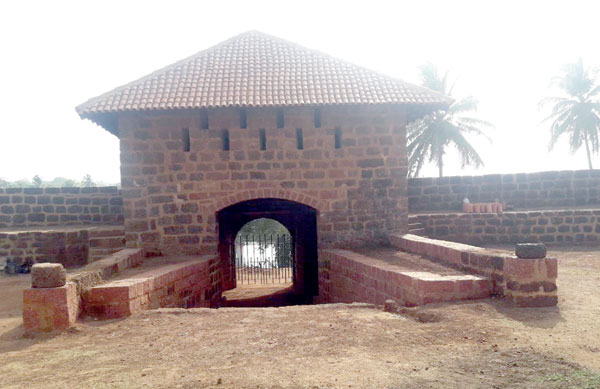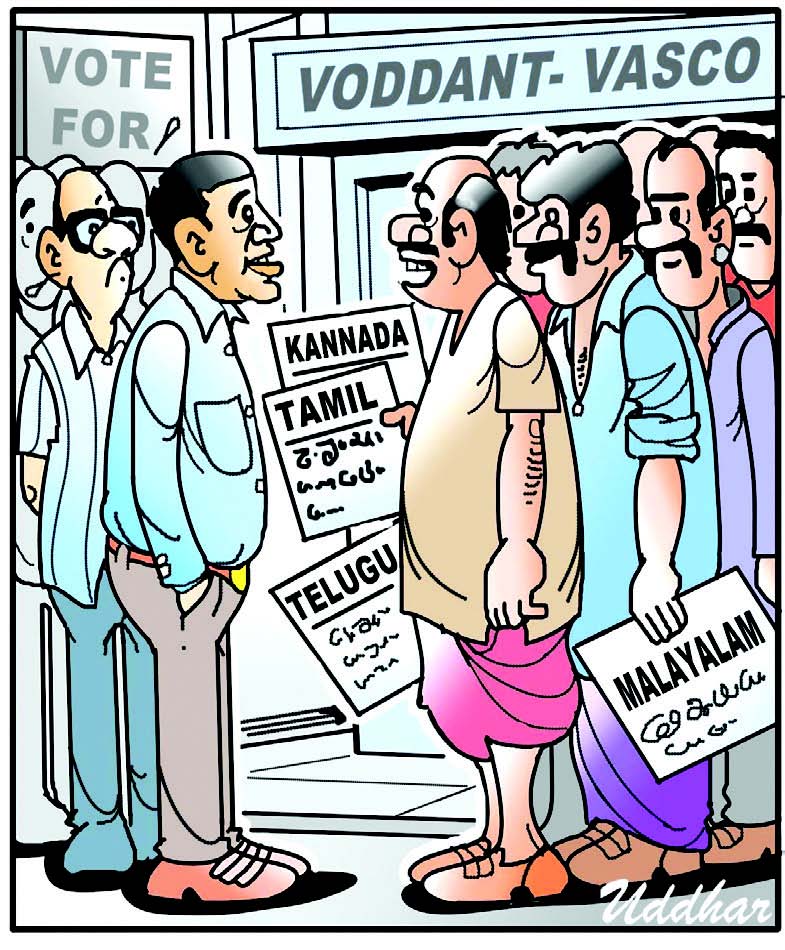09 Mar 2019 | 06:18am IST
How a Portuguese traveller helped restore Alorna fort
The 17th century fort gateway picture drawn by Portuguese traveller Lopes Mendes in the 19th century, was used as a reference by the Archaeology Department to restore the fort’s entrance
SHWETA KAMAT
PANJIM: An ethnographic survey conducted by a Portuguese traveller Lopes Mendes, way back in the 19th Century, was instrumental to the department of Archives and Archaeology, which recently undertook the restoration of the entrance of one of Goa’s oldest forts.
The Alorna fort in Pernem, was constructed by the Bhonsles of Sawantwadi in the 17th Century and its entrance was in a dilapidated state until recently.
The picture of the Alorna fort gateway drawn by Lopes Mendes proved to be handy and was used as a reference while restoring the entrance. It is to be noted that when the department had taken up the restoration work in April 2018, the entrance had collapsed completely.
Speaking to Herald, Assistant superintending archaeologist Varad Sabnis informed that Lopes Mendes was a Portuguese traveller, who travelled to Goa in the 19th century and during that period, he conducted an ethnographic survey of Goa and Goans; and depicted the same through various sketches like that of people, festivals, occupations and monuments.
“The restoration of monuments is a different and complex process. While undertaking the process, one has to restore the structure as well as heritage value of the structure. Structures, aesthetic value and time period needs to be preserved,” he explained, adding that they had to ‘keep in mind these three points while restoring the entrance of Alrona Fort too.’
“It is for this, we used the picture drawn by Lopes Mendes for reference,” Sabins quipped.
The refurbishing of 350-year-old fort included restoration, repair, structural consolidation, entrance and additional information gallery. Conservation Architect Ketak Nachinolkar was appointed as the consultant for the project, while the work was allocated to Chandrashekhar Yalwar.
The restoration work is been done using mixture of lime, sand, jiggery, mud for cementing, the items that were initially used for construction of the fort. The consultant had undertaken a detailed structural study of the fort before undertaking the restoration, which is now completed.
Located on the bank of River Chapora, the fort, constructed by Bhonsles of Sawantwadi, was conquered by Portuguese later and used as a major water route for trading.
Sabins pointed out that while clearing up the dumps at the site, the department came across glazed pottery and glass objects made in countries like China, England, Germany, Netherland, Portugal and Persia.
“This shows that the place had developed contact with various parts of the world through the Portuguese,” he explained.

